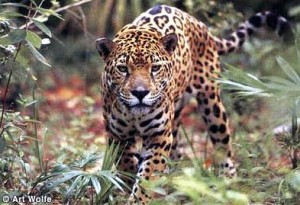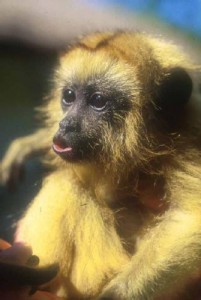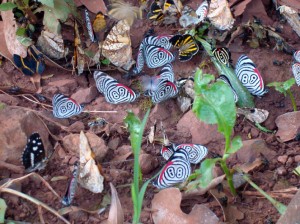 Currently, the Iguazú offers educational tours, recreational events, water sports and adventure tourism services featured. In that sense, Expedition Iguazú is a new alternative for tourists; case of an educational service, entertaining, funny and generating buzz in each space traveled in the jungle. Iguazu is not limited in showing rivers and waterfalls. Since the late nineties, the northern tourist destination Missions gradually modified its tourism agenda with new opportunities for development through private sector investment and state support. Currently, the Iguazú offers educational tours, recreational events, water sports and adventure tourism services featured. In that sense, “Expedition Iguazu” is a new alternative for the tourist, this is a service educational, entertaining, funny and generating buzz in each space traveled in the jungle. There, the expert guide explains with passion the secrets of each species of fauna and flora that inhabits the highly endangered; interpreting each species behavior and discovering the deep secrets of the forest of the Paraná River The visitor who gets onto the jungle trails attentive spirit missionary sure will have the opportunity to observe numerous species of animals in their natural habitat.
Currently, the Iguazú offers educational tours, recreational events, water sports and adventure tourism services featured. In that sense, Expedition Iguazú is a new alternative for tourists; case of an educational service, entertaining, funny and generating buzz in each space traveled in the jungle. Iguazu is not limited in showing rivers and waterfalls. Since the late nineties, the northern tourist destination Missions gradually modified its tourism agenda with new opportunities for development through private sector investment and state support. Currently, the Iguazú offers educational tours, recreational events, water sports and adventure tourism services featured. In that sense, “Expedition Iguazu” is a new alternative for the tourist, this is a service educational, entertaining, funny and generating buzz in each space traveled in the jungle. There, the expert guide explains with passion the secrets of each species of fauna and flora that inhabits the highly endangered; interpreting each species behavior and discovering the deep secrets of the forest of the Paraná River The visitor who gets onto the jungle trails attentive spirit missionary sure will have the opportunity to observe numerous species of animals in their natural habitat.
Mammals to the Misiones rainforest
 Many mammals have habits determined by the forest environment they inhabit: are arboreal and community. One of the most striking adaptations to life in the treetops is the development of a prehensile tail, which functions as a fifth hand. If you pay attention, especially at the Path Macuco, and looks upwards, you can see the monkey fell or cappuccino, with agile moves that look like a dance, travels through the top of the trees. Other animals that share this characteristic are the anteater, lascomadrejas or possums and coendú, a rodent covered with thorns. The coatis, with its ringed tail are a very frequent visitors transiting the catwalks. It’s naughty and always travels in groups, to the delight of the kids, playing with them. The cats, agile, silent and cunning hunters, are another wonder of the park. The most important is the jaguar, which was declared a National Natural Landmark in 2001. Eat a wide variety of prey, including mammals. Other cats, smaller in size, are the puma and jaguarundi elocelote.
Many mammals have habits determined by the forest environment they inhabit: are arboreal and community. One of the most striking adaptations to life in the treetops is the development of a prehensile tail, which functions as a fifth hand. If you pay attention, especially at the Path Macuco, and looks upwards, you can see the monkey fell or cappuccino, with agile moves that look like a dance, travels through the top of the trees. Other animals that share this characteristic are the anteater, lascomadrejas or possums and coendú, a rodent covered with thorns. The coatis, with its ringed tail are a very frequent visitors transiting the catwalks. It’s naughty and always travels in groups, to the delight of the kids, playing with them. The cats, agile, silent and cunning hunters, are another wonder of the park. The most important is the jaguar, which was declared a National Natural Landmark in 2001. Eat a wide variety of prey, including mammals. Other cats, smaller in size, are the puma and jaguarundi elocelote.
Butterflies and birds
 A show apart is the huge variety of insects that inhabit the park. Butterflies are huge, with bright colors and odd shapes, natural design festival! The birds are more than 400 species, including parrots, hummingbirds, tucanesy others. But the most typical are the cascading swifts, which nest and hide behind the waterfalls, on rocks.
A show apart is the huge variety of insects that inhabit the park. Butterflies are huge, with bright colors and odd shapes, natural design festival! The birds are more than 400 species, including parrots, hummingbirds, tucanesy others. But the most typical are the cascading swifts, which nest and hide behind the waterfalls, on rocks.
The fishes
As for the fishes, we must distinguish two main areas, as the falls have constituted a barrier between the upper and lower river for many millennia, what made aquatic fauna evolved separately. In the lower river is surubí, pacu, tarpon and piranha, while in the upper river are chanchitas of colors, wolf fish, toothy and moncholos.

